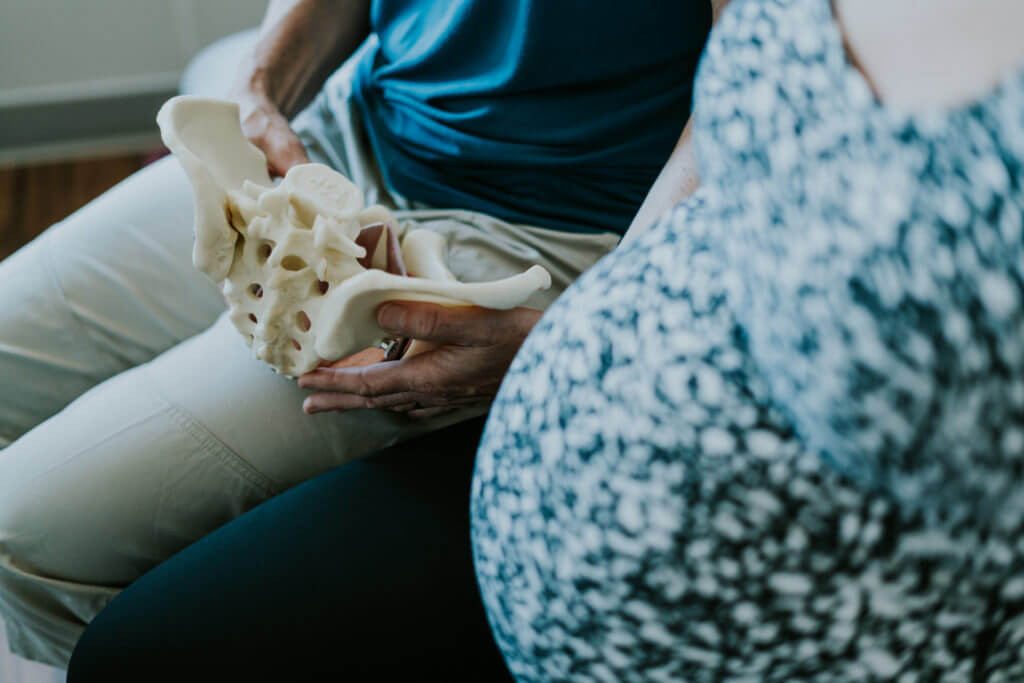Women’s Health Therapy
Your body changes when you start a family. We can help you regain control.
At Burrard Physiotherapy, we recognize that women can experience specific problems which may be (but not always) associated with pregnancy, childbirth, and menopause. Many women accept these changes and think these are just a part of life and nothing can be improved. Not true! Most problems can be overcome with the right intervention.
During pregnancy, approximately 50% of women experience pelvic girdle pain. This pain may be felt in the lower back/sacral area, hips, or groin/pubic area. Changes in the pelvic ligaments and connective tissue while pregnant give increased mobility in the pelvis as part of the natural process to prepare the body for childbirth. If you have pain when moving eg, walking, turning in bed, prolonged sitting, or standing, this may be due to muscle/joint imbalance around the pelvis. Physiotherapy treatment can address this imbalance so that you can move freely again.
Following childbirth, many women are keen to resume exercising and improve control of their core muscles. Do you have concerns about a Diastasis of Recti Abdominis (DRA)? DRA is a stretching between the 2 sides of the rectus abdominis muscle, and you may notice a bulging or gap in the abdominal wall when exercising. While this is common following pregnancy, with the correct exercises you can regain control of your abdominal muscles. At Burrard Physiotherapy we have a Real Time Ultrasound imaging unit which allows you and your physiotherapist to see your core muscles in action and to teach you appropriate level exercises.
Incontinence (leakage of urine, gas, or stool), or frequent urges to visit the bathroom can be indicators that the pelvic floor muscles are not working at their best and that pelvic floor muscle training may help. But…a word of caution- not everyone will benefit from ‘Kegel’ exercises to make the muscles stronger. For many women they also need to learn how to relax these muscles, particularly if their concerns are: frequent urges to visit the bathroom, or painful sex.
Osteoporosis is a gradual decline in the mass of the bone tissue with weakening of the bone. It affects 1 in 4 women (post-menopause) and 1 in 8 men over the age of 50 years. Specific strengthening exercises to promote bone production, and balance exercises to reduce your risk of falling, are key features of creating a home exercise programme to optimise bone health and prevent breaking a bone.
If you are experiencing any of the above or other Women’s Health related concerns, book an appointment with Lynda Lawrence –pelvic health physiotherapist and certified Rost therapist. Rost therapy is an effective treatment technique with home exercises to improve pelvic balance for pelvic girdle pain and tail bone (coccyx) pain. Lynda has over 30 years of clinical experience with specialised training in Women’s Health physiotherapy including peri-natal care (e.g. pelvic girdle pain, tail bone pain, diastasis of rectus abdominis), pelvic floor conditions (e.g. incontinence, pelvic organ prolapse), pelvic pain and osteoporosis. After a comprehensive assessment, she will discuss with you how physiotherapy can help you achieve your personal goals and support a return to your usual activities, e.g: caring for baby, resuming sports/daily activities or to cope with personal concerns about your bladder, bowel or sexual health.

